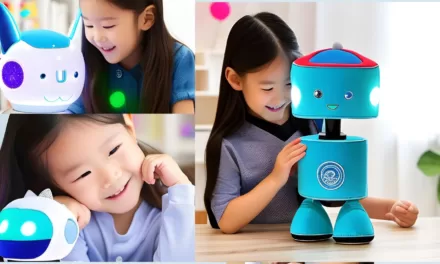Robots for kids to build have become increasingly popular in recent years, offering numerous benefits for children of all ages. From mechanical to electronic to programmable robots, there are a variety of options available for kids to explore and build.
Not only is building robots a fun and engaging activity, but it also provides a range of learning opportunities in the fields of science, technology, engineering, and math (STEM).
In this article, we will explore the types of robots for kids to build, factors to consider when choosing them, the building process, learning opportunities provided, recommended robots, and more.
Types of Robots for Kids to Build
There are several types of robots for kids to build, including mechanical, electronic, programmable, and hybrid robots.
Mechanical robots typically involve basic engineering concepts, such as levers and pulleys, and require the use of tools to assemble.
Electronic robots incorporate circuitry and sensors to perform specific functions, such as obstacle avoidance or line-following.
Programmable robots use coding to control their behavior, providing an opportunity for kids to learn coding concepts.
Hybrid robots combine elements of mechanical, electronic, and programmable robots, offering a more advanced building experience.
Factors to Consider When Choosing Robots for Kids to Build
When selecting a robot for a child to build, several factors should be considered. Age appropriateness is crucial, as some robots may be too complex for younger children.
Complexity is another factor, as some robots require more advanced building skills or programming knowledge.
Durability is essential, as kids may want to play with and test their robots frequently. Cost is another consideration, as some robots can be quite expensive.
Finally, safety features should be evaluated, as some robots may contain small parts or require adult supervision.
Building Process of Robots for Kids
The building process of robots for kids typically involves four main steps: design and planning, gathering materials and tools, assembly and testing, and troubleshooting and improvements.
The design and planning phase includes brainstorming ideas and creating a blueprint or model of the robot.
Gathering materials and tools involves researching and purchasing necessary components, such as motors, sensors, and controllers.
Assembly and testing require following instructions and putting the robot together. Troubleshooting and improvements involve identifying and fixing any issues with the robot’s functionality and making improvements to its design.
Learning Opportunities Provided by Building Robots for Kids
Building robots provides a range of learning opportunities for kids, including STEM skills development, creativity and innovation, critical thinking and problem-solving, teamwork and communication, and career exploration.
Kids can learn about engineering, physics, and programming concepts while also developing their creativity and imagination as they design and build their robots. Building robots also encourages critical thinking and problem-solving skills, as kids may need to troubleshoot issues and make improvements to their robots’ functionality.
Collaboration and communication skills are also developed as kids may work in teams to build their robots and share their ideas and progress.
Recommended Robots for Kids to Build
There are several popular robots for kids to build that are highly recommended by educators and parents alike. LEGO Mindstorms EV3 is a programmable robot kit that allows kids to build and program robots using LEGO blocks and a computer program.
VEX Robotics offers a variety of robot kits, including the VEX IQ and VEX EDR, that allow kids to build and program robots using a variety of components. Makeblock mBot is another popular robot kit that includes sensors, motors, and a programmable controller, allowing kids to build and program their own robots.
Wonder Workshop Dash and Dot is a set of robots that kids can program to move, light up, and make sounds. Robolink CoDrone is a programmable drone that kids can build and program to fly.
Conclusion
Building robots for kids is an engaging and beneficial activity that provides numerous learning opportunities in STEM, creativity, critical thinking, and more. With the variety of robot kits available, parents and educators can find the right robot for each child’s interests and abilities.
Encouraging kids to build robots not only provides a fun and challenging experience but also prepares them for future careers in STEM fields. As such, parents and educators should support and facilitate the building of robots for kids, fostering their curiosity, imagination, and problem-solving skills.

